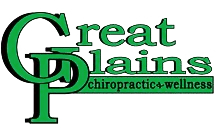
We all love movie soundtracks. The music can transport us right into the story and lift us high, allow us to cry, or give us reasons to hide under our covers in fear. Now just think about if our lives all had theme music playing in the background. In reality, the sound effects or theme music set by our bodies does allow us to hear what it would like us to address. For instance, if our stomach rumbles, we address our need for food. Now, what about those squeaks, pops, and groan sound effects that may be coming from our joints as we move?
Read on to learn more.
Not Jaws Just The Joints
My body is playing the theme of “Jaws?” If your mind has gone directly to playing the theme song in fear, do not fret, for musculoskeletal joint stiffness can come naturally with age and have a happy ending.
As we age gracefully, we may find that our shoulders, knees, and ankles are not as flexible as they used to be. It has become more difficult to bend over and pick up a dropped object. We may have also noted that it is uncomfortable to turn our head in order to see the car behind us in the next lane. Unfortunately, the shark bite is that left untreated our joints will get stiffer as we age not only from lack of motion but the natural process of decreased levels and increased density of synovial fluid. Joints such as the shoulders, knees, and ankles are lubricated and maintained by this synovial fluid. The synovial fluid keeps the joints moist, provides oxygen and nutrition, and washes away toxic end-products of the normal metabolic processes. If ignored, our joints will lose a significant amount of mobility. However, our lifeguard of good news is there’s plenty you can do to help prevent stiffening and can regain and retain much of your youthful flexibility, but only if you are willing to be active.
Lights, Camera, Action!
One way to combat such physiologic aging is to keep active. Unfortunately, this is a pretty big task for the people of today who spend the majority of their time plugged into virtual devices for work, entertainment, and even their exercise program.
First Step, let us create time for real-life, real-time exercise. Almost any type of exercise helps synovial fluid to become more available which allows the synovial fluid to be pumped into joint spaces and increases the lubrication into the joints. Exercise also raises the core temperature of the body, which subsequently decreases the viscosity of synovial fluid. The end product is increased joint flexibility. This benefit is, more often than not, experienced immediately. The benefit will be long-lasting, but only if you continue to exercise regularly.
Take Two!
Thirty minutes of exercise per day, five times a week, will help us maintain as much joint flexibility as possible. Switching between a cardiovascular exercise day and a strength training day is the optimal exercise program. Yoga can give a total body workout which uses cardiovascular exercise, strength training, and flexibility.
The types of exercise you do are not as significant as the long-term consistency of the exercise. Regular, vigorous exercise, will provide great benefit, not only will it improve your joint flexibility, but it will also help to improve your general health and wellness!
Ready To Help!
As we begin to get moving or have avoided moving due to the pain and restrictions you may need a helping hand.
Our healthcare can be that hand (or two) that you need. Our expert team is ready to help you with your joint challenges that may need a jump start to begin the healing process and be there all the way through the supervised rehabilitation program.
So if you are ready to launch, call us today so we can help you restore optimal function for the Oscar Winner, “It Can Be An Optimal Life.”
For Your Health,
Dr. Mark Hardwick and Dr. Mitchell Jacobs
